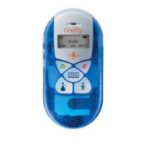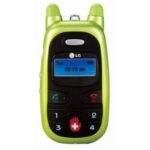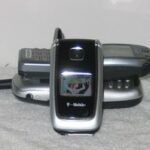What are smartphones, and how can I use them to become more productive? Should I invest money in a new cell phones, or should I just continue to just the phone that I already have? Why would I want to use a cell phone to run programs that I can already run on my computer? Am I behind the times because I do not have a smartphone? No, you’re not behind the times, but you might be interested to know that smartphones have evolved to the point where they may be even more practical than personal computers or notebooks. Part of the reason is because with the advent of 3G and 4G Internet connectivity information a cellular Internet connection is actually comparable to that of your home Internet connection. In this article I will define what a smartphone is and show you how can you get the most of them and compare the various incarnations of smartphone technology to help you decide what is the best route to take when considering a new cell phone.
Smartphones are cell phones that are capable of running programs called apps to duplicate the functionality of a personal computer. They are a step up from “feature phones”, that have very limited functions, but more than your typical cell phone from the early nineties. Keep in mind that as of 2009 seventy two percent of the sales of new handsets were for feature phones. These are phones that did not run on operating systems; when differentiating feature phones from smart phones, and had everything built in and were not expandable. Whatever you used the phone for, ran out of the box. If you have a phone that lets you take pictures and send text messengers, or has a calculator and simple functions like GPS or the ability to play music you already have a feature phone. My old LG CF360 is an example of a feature phone. It does a few things, but the functionality is hard wired into the phone. Feature phones exploited text messaging and picture messaging functionality to send photos and videos but weren’t designed with Internet connectivity in mind. Browsing the Internet on one of these phones is like using Netscape Navigator; good at the time when it was the latest and greatest but completely and utterly ridiculous in this day and age.
Think of a feature phone as an old computer from the 80s that you do not have to load the operating system onto, like the Commodore 64, and a smart phone as a computer that is more configurable and has the memory to do more things, like an IBM PC that runs Windows 98. The question comes to mind is whether or not feature phones are enough for most people. Do you need to use your phone to be productive? Do you need to run applications like Microsoft Office on the phone? Do you want to watch YouTube videos on the phone? Do you need to run more than one application at a time? Would you like to use Twitter the same way that you would on your computer, without using the text messaging functionality of your phone, or would you like to connect with people on Facebook? If you answered yes to any of those questions then you need a smartphone.
Smartphones run on a variety of different platforms. The oldest smartphones were the Windows Mobile and BlackBerry phones. Symbian was also a hot platform for Nokia phones but plans for the operating system to be absorbed into Windows Phone 7 are underway. Nokia was a leader manufacturer of feature phones in the nineties and an early pioneer in smartphone technology along with BlackBerry, long before the Android or iOS phones. One of the reasons that Symbian and Windows Phone 7 phones do not sell well is because they run on complex technology that requires expensive hardware; loosely translated these are phones that are just too expensive for the needs of most individuals.
Nokia still makes good phones, but they simply have not been as strong in the market as they used to be. Sony phones also run on Symbian. You can still find great deals on Nokia smartphones if all you need is basic functionality like a touchscreen, though some of their cheaper phones do not have Wi-Fi. This is the ability to use an Internet connection without using your minutes by picking up a signal from a wireless router. That allows you to save money and place calls through your web browser with applications like Google Voice when possible. It also allows you to save money because you aren’t paying for data. Without Wi-Fi everything you do on the phone uses an Internet connection provided through mobile broadband, which is a nice way to say that you are using a proprietary Internet connection assigned directly to your phone. The good thing about mobile broadband is that, unlike Wi-Fi, you don’t have to know which network you’re on, and you don’t have to worry about passwords and security because all of that is taken care of by your cell phone provider. The bad thing about it is that it can be expensive.
You may have heard terms like Android, iPhone and BlackBerry. Android based phones represent the majority of smartphone sales as of 2010 , replacing the lead that Symbian based phones used to have in the market. The operating system is developed by Google, in sharp contrast to Symbian, that was developed by Nokia. You might question the integrity of an operating system for phones that is not developed by a cellular phone maker, but one of the things that is exciting about smartphones is that companies that were not traditionally involved in cell phones, like Microsoft, Apple and Google, are not at the forefront of cellular technology.
Bringing personal computing and software makers into the development of cellular operating systems is also a good thing because it can be a natural transition between personal computing and the operation of smartphones for people that are accustomed to computers but no absolutely nothing about phones. When most people think about Android based phones they think of the Droid line of phones by Motorolla. A look at their site shows a phone that boasts a phone with YouTube, Amazon MP3, Google Search by Voice and Google Maps. Did I mention Facebook?
It used to be that those were the apps that you were stuck with, in the case of feature phones. But that is what the phone comes with out of the box. Motorolla’s offers different Android based phones at different price points for different cellular phone providers. The Droid phones themselves are designed specifically for Verizon . But Verizon also offers Android based phones that aren’t Droid phones . Android has breathed new life into Motorolla, which had been missing in action with respect to the feature phone market. Thanks to Android, Motorolla has now developed a tablet, the Motorolla Xoom, a high end device that boasts 32GB of memory and a camera.
That may not seem like a lot considering personal computers have 500GB of disk space, but considering that computers have been liberated from the confines of a keyboard it is a pretty big deal. For a complete review of all that the Android has to offer, check out this website . The big question is whether Android phones outperform iPhones. I found an interesting article that suggests that Android phones do at least ten things better than iPhones. These are phones that run on iOS , the Apple platform which has been extended to other devices such as Apple TV, the iPad and the iPod Touch. Android has their own web browser that supports Flash, which most Apple devices do not. Apple is relying on a technology called HTML 5 to play back videos, and had a well publicized feud with Adobe when the iPad first came out because of it.
The desktop of iPhones consist of various icons to do functions whereas the desktop on Android phones includes working applications. To be fair Windows Phone 7 phones, which we’ll talk about later, do the same thing. According to this article synchronization with your computer takes place through iTunes, which seems to be the default synchronization tool for everything with Apple, on iPhones and the Android phones have a better interface.
The real question about whether or not to choose Android over Windows Phone 7, iPhone, or Blackberry is how customizable you need the phone to be. Keep in mind that Android is open source and as such is in the spirit of Linux, a customizable operating system in which no two desktops need to look alike with entirely too many screen savers to count. This isn’t necessarily to say that Android appeals primarily to propeller heads, but as with most open source communities, it can be overwhelming and offer too much for the average consumer to concern themselves with. But there are phones at all price points, as well as tablets, as in the near future, anything else that needs two way communication to get onto the Internet.
The next platform we’ll look at is that of the iPhone. Unlike the Android phones, the iPhones have a clean and simple interface, do not support Flash but can play back videos, and have apps that are tailored to the average user. There are only two phones ; the iPhone 4 or the iPhone 3G. The iPhone 4 comes in two different flavors; one with 16 GB or one with 32 GB, for $199 or $299 respectively. The iPhone 3G comes in 8 GB and sells for $49. The phones are available through AT&T; or Verizon. There really isn’t that much to think about here. But the strength of the platform might be in the simplicity. If you need apps, there are over 350,000 for your consideration. You can do everything from becoming a DJ to reading the New York Times on the phone.
As mentioned earlier to download apps you use iTunes. The iPhone 3GS is not in high definition, and technically the iPhone 4 isn’t either, but it does have twice the resolution that the 3GS does. Smartphones may have a high resolution display, but that term should not be confused with high definition. What smartphones can do, is to shoot pictures and video in high definition. The iPhone 4 also offers video calling. If you’re going to use Wi-Fi, you might want the iPhone 4 because the modem can support 802.11n, which will give you faster Wi-Fi than the iPhone 3G which only goes up to 802.11g.
The iPhone 4 is on AT&T; and Verizon and the iPhone 3 is only on AT&T.; The iPhone is expensive though; the prices quoted above are for 2 year contracts. Without a contract the price of an iPhone 3G shoots up to $499 or more. The iPhone and the Android phones are best suited to individuals that need a smartphone to be productive and are interested in the cool apps that are offered, but that do not need an expensive phone and the more sophisticated apps that you find on Windows Phone 7 and BlackBerry phones.
BlackBerry is the next platform I will address. Their operating system is appropriately known as BlackBerry OS. The phones first hit the scene back in 1999 when the average person was still figuring out how to use feature phones. They are best known for their implementation of personal digital assistants into cell phones. When the PDA (personal digital assistant) was first introduced in the early nineties they were hideous devices that attempted to bring some of personal computing to a handheld device and primarily used for business purposes. Nokia was the first to bring both ideas together in a device known as the 9000 communicator . That device still lives in the E90 communicator, the fifth generation incarnation of that concept.
BlackBerry phones are primarily used for corporate email, though they do support text and picture messaging. The phones are the ultimate device for anyone that is serious about messaging and virtually all platforms are supported imaginable, whereas other smartphones primary focus is on Twitter and Facebook (or Windows technologies in the case of Windows Phone 7 phones). Their market share is small, at only 14% . If you are a mail geek and know the difference between POP3, IMAP, or ICQ, BlackBerry might be the smartphone for you. As you can imagine the phones are technical and the platform is very specialized. The phones are probably better than any other at what they do best, which is messaging, but they might not be practical for other uses.
They have more than just 2 phones though, if you were to compare their services to that of the iPhone. The seven phones they offer should be enough for anyone that is seriously interested in one to find what they need. I counted 21,929 apps from their app store, a far cry from the 350,000 you will find for the iPhone or, if what is typically the case with open source, an infinite amount of apps for Android. One good thing about BlackBerry is that the phones are available through pretty much any carrier you can possibly think of.
The last platform we’ll look at is Windows Phone 7. This isn’t Microsoft’s first foray into smartphones though, Microsoft has been in the mobile phone market almost as long as Research In Motion, the company that makes BlackBerry phones, has. Their old platform, Windows Mobile, shares an interesting history that could be compared to that of Mac OS in that where with Mac OS X the operating system was reborn with major, profound changes to the interface the same has happened with Windows Phone 7, which shares no resemblance to Windows Mobile 6.5.
Windows Phone 7 phones have a strange desktop. Their phones start up with a bunch of colored squares that represent different apps typically on a white background (the squares are typically the same primary colors represented in the Windows logo). The font used is Seoge , which is an attempt by Microsoft to develop brand recognition through the use of a modern font that no one else uses. As is the case with everyone but Android, yet again, the simplicity of the phones is often the strength of the platform.
There are not many apps for Windows Phone 7; at last count only 3000 . Apps can be downloaded directly off of the screen through Microsoft Tag ; a digital barcode that allows visual communication with the Windows Phone 7. That is pretty cool and definitely not anything you hear about with the other digital platforms. So I can go to Bing, do a search for Windows Phone 7 apps, scan the Microsoft Tag on the computer screen, and the app will download to the phone. Definitely more interesting than using iTunes to download an app.
But as is usually the case with Microsoft the true genius of the platform will be hidden by the fact that Microsoft doesn’t do enough to advertise the full capabilities of what they have to offer. The desktop of the phones seems abstract, and undersells what the products are truly capable of. For more information about Windows Phone 7, where to buy the phones and what it is capable of, check out this website .
There are a lot of choices out there when it comes to smartphones. If you need a lot of apps and the ability to do virtually anything the phone is physically capable of doing you should probably stick with Android. If you want simplicity, you may want to look into the iPhone or Windows Phone 7; the iPhone if you need a lot of apps or Windows Phone 7 if you don’t care about a lot of apps but enjoy the unique ideas that Microsoft has. Windows Phone 7 is a definite improvement over Kin , a high end feature phone by Microsoft that has been buried in the Verizon website . Finally, if you are a power user with respect to all things messaging you might want to take on a BlackBerry; there are enough apps for those that aren’t into messaging and the device is known for its security. Take the time to learn about all of the different devices out there and find out what is right for you.




